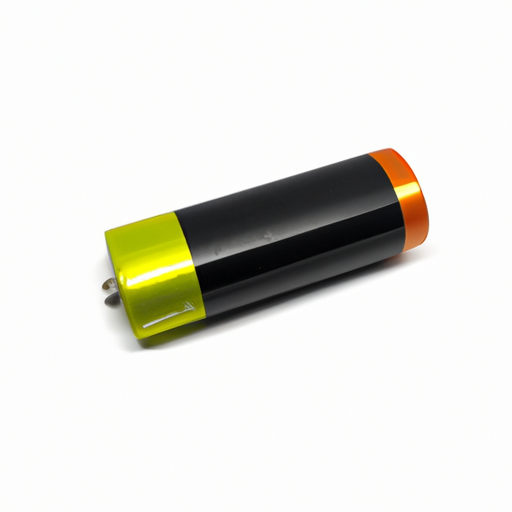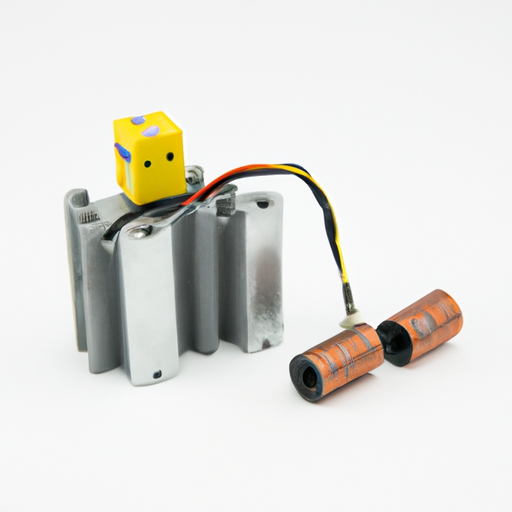What are the Standards for Damaged Battery Holders?
I. Introduction
Battery holders are essential components in a wide range of electronic devices, from remote controls to complex medical equipment. They serve as the interface between the battery and the device, ensuring a secure connection that allows for the efficient transfer of power. Given their critical role, the integrity of battery holders is paramount. When battery holders become damaged, they can pose significant safety risks, including short circuits, battery leakage, and even fire hazards. Therefore, understanding the standards that govern damaged battery holders is crucial for manufacturers, consumers, and safety regulators alike.
II. Understanding Battery Holders
A. Types of Battery Holders
Battery holders come in various designs, each suited for specific applications:
1. **Fixed Battery Holders**: These holders are designed to securely hold batteries in place without any moving parts. They are often used in devices where the battery is not intended to be frequently replaced.
2. **Spring-loaded Battery Holders**: These holders utilize springs to maintain contact with the battery terminals. They allow for easy battery replacement and are commonly found in portable devices.
3. **Battery Trays**: Battery trays are larger holders that can accommodate multiple batteries. They are often used in applications like power tools and electric vehicles.
B. Common Materials Used in Battery Holders
Battery holders are typically made from a variety of materials, each chosen for its specific properties:
1. **Plastic**: Lightweight and cost-effective, plastic is commonly used for battery holders. However, it may not withstand high temperatures or physical stress as well as other materials.
2. **Metal**: Metal holders, often made from aluminum or steel, provide durability and better conductivity. They are ideal for high-performance applications but can be heavier and more expensive.
3. **Composite Materials**: These materials combine the benefits of both plastic and metal, offering a balance of strength, weight, and cost.
C. Functionality and Design Considerations
When designing battery holders, manufacturers must consider factors such as ease of use, durability, and compatibility with various battery types. The design must also facilitate proper ventilation to prevent overheating and allow for safe battery replacement.
III. The Importance of Standards
A. Safety Concerns Related to Damaged Battery Holders
The safety implications of damaged battery holders cannot be overstated.
1. **Risk of Short Circuits**: Damaged holders can lead to unintended contact between terminals, resulting in short circuits that can damage the device and pose fire risks.
2. **Potential for Battery Leakage**: Physical damage can compromise the integrity of the battery, leading to leakage of harmful chemicals that can damage the device and pose health risks.
3. **Fire Hazards**: Overheating due to poor connections or short circuits can ignite flammable materials, leading to fires.
B. Regulatory Bodies and Their Roles
Several organizations set standards for battery holders to ensure safety and reliability:
1. **International Electrotechnical Commission (IEC)**: The IEC develops international standards for electrical and electronic devices, including battery holders.
2. **Underwriters Laboratories (UL)**: UL is a safety certification organization that tests and certifies products for safety, including battery holders.
3. **American National Standards Institute (ANSI)**: ANSI oversees the development of voluntary consensus standards for products, including those related to battery safety.
IV. Standards for Battery Holders
A. General Standards Applicable to Battery Holders
Battery holders must comply with various general standards:
1. **Material Safety Standards**: These standards ensure that the materials used in battery holders do not pose health risks and can withstand environmental factors.
2. **Electrical Safety Standards**: These standards govern the electrical performance of battery holders, ensuring they can handle the required voltage and current without failure.
B. Specific Standards for Damaged Battery Holders
When it comes to damaged battery holders, specific guidelines are in place:
1. **Guidelines for Inspection and Testing**: Regular inspections are necessary to identify damage. Testing methods may include visual inspections, electrical testing, and stress tests to assess the holder's integrity.
2. **Criteria for Replacement and Repair**: Standards outline when a battery holder should be repaired or replaced, focusing on the extent of the damage and the potential risks involved.
C. Compliance and Certification Processes
Manufacturers must adhere to compliance processes to ensure their battery holders meet safety standards. This often involves rigorous testing and certification by recognized bodies like UL or IEC.
V. Identifying Damage in Battery Holders
A. Common Types of Damage
Identifying damage in battery holders is crucial for maintaining safety:
1. **Physical Damage**: Cracks, breaks, or deformities can compromise the holder's integrity.
2. **Corrosion and Rust**: Exposure to moisture can lead to corrosion, which can affect electrical connections and overall functionality.
3. **Electrical Damage**: Signs such as burn marks or melted components indicate severe electrical issues that require immediate attention.
B. Visual Inspection Techniques
Regular visual inspections can help identify damage early. Look for any signs of wear, discoloration, or physical deformities.
C. Testing Methods for Assessing Functionality
In addition to visual inspections, testing methods such as continuity tests and resistance measurements can help assess the functionality of battery holders.
VI. Best Practices for Handling Damaged Battery Holders
A. Safety Precautions
When dealing with damaged battery holders, safety should be the top priority:
1. **Personal Protective Equipment (PPE)**: Always wear appropriate PPE, such as gloves and safety goggles, when handling damaged components.
2. **Proper Disposal Methods**: Follow local regulations for disposing of damaged battery holders and batteries to prevent environmental contamination.
B. Repair vs. Replacement Considerations
Deciding whether to repair or replace a damaged battery holder depends on the extent of the damage and the associated risks. In many cases, replacement is the safer option.
C. Recommendations for Maintenance and Care
Regular maintenance can extend the life of battery holders. Keep them clean, ensure proper ventilation, and avoid exposing them to extreme temperatures or moisture.
VII. Case Studies and Real-World Applications
A. Examples of Incidents Caused by Damaged Battery Holders
There have been numerous incidents where damaged battery holders led to device failures or safety hazards. For instance, a well-documented case involved a smartphone that caught fire due to a damaged battery holder, highlighting the importance of adhering to safety standards.
B. Lessons Learned from Industry Practices
Industries have learned the hard way about the importance of rigorous testing and adherence to safety standards. Implementing regular inspections and maintenance protocols can significantly reduce risks.
C. Innovations in Battery Holder Design and Materials
Recent advancements in materials science have led to the development of more durable and safer battery holders. Innovations such as heat-resistant plastics and corrosion-resistant coatings are becoming standard in the industry.
VIII. Conclusion
In conclusion, the standards for damaged battery holders are vital for ensuring safety and reliability in electronic devices. Manufacturers, consumers, and regulatory bodies must work together to uphold these standards and prioritize safety. As technology continues to evolve, so too will the standards governing battery holders, paving the way for safer and more efficient electronic devices.
IX. References
- International Electrotechnical Commission (IEC) standards
- Underwriters Laboratories (UL) certification guidelines
- American National Standards Institute (ANSI) resources
- Industry publications on battery safety and standards
By understanding and adhering to these standards, we can mitigate risks associated with damaged battery holders and ensure the safe operation of electronic devices.













